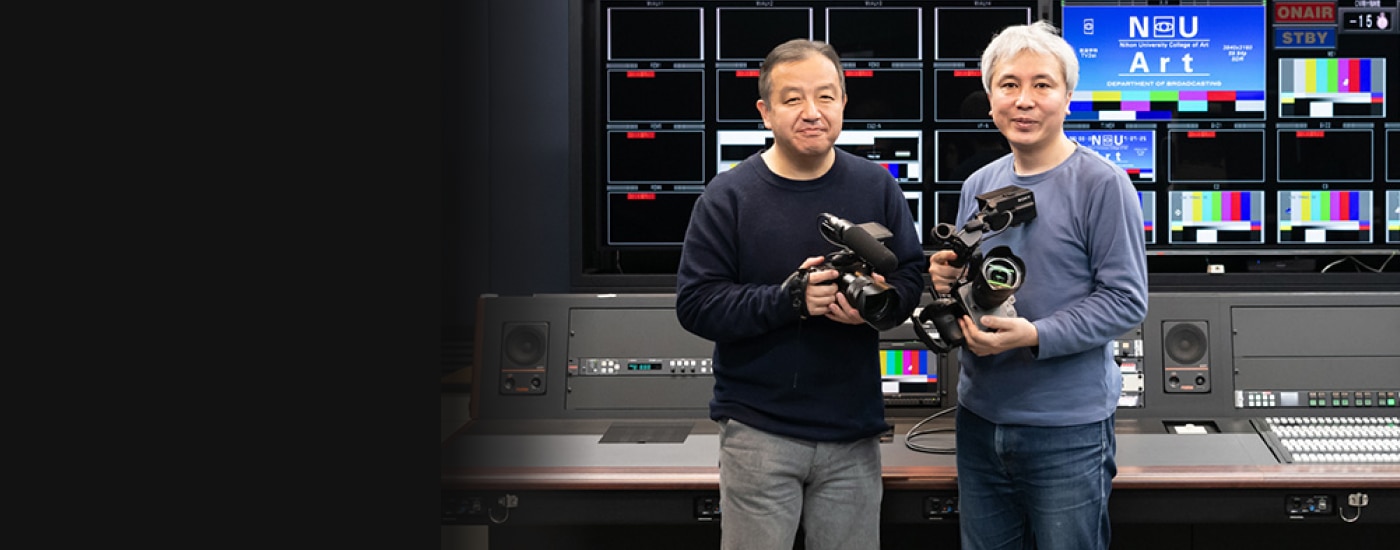
Developing future leaders: Cinema Line cameras contributing as educational tools
Nihon University’s College of Art, a prolific source of creators in the visual arts field, has incorporated Sony’s Cinema Line cameras “FX6” and “FX30” into its broadcasting department curriculum, which is keenly attuned to the latest trends in video production. The equipment selection was made with both student interests and industry trends in mind, with the “FX6” and “FX30” catering to different levels of student experience and aspirations. We spoke to Professor Hiroshi Abe, Head of the Broadcasting Department and Academic Affairs, and Technician Jingo Azumi about practical examples of using these cameras in educational settings.

- Equip students with the latest industry-standard video production tools to enhance their learning experience and prepare them for professional roles in broadcasting and video production

- Integrate Sony’s Cinema Line cameras, specifically the ‘FX6’ and ‘FX30,’ into the Broadcasting Department curriculum. These cameras cater to different levels of student experience and align with current industry trends, ensuring students gain hands-on experience with professional-grade equipment

- Improved student engagement and motivation through access to high-performance, user-friendly cameras
- Enhanced video production quality in student projects, including practical training and graduation projects
- Seamless adaptation to industry-standard equipment, boosting student confidence and readiness for professional environments
- Greater flexibility and ease of shooting in various conditions, including low-light scenarios
Aligning equipment selection with student needs and industry trends
Students with a keen interest and passion for television and radio acquire specialized skills
Abe: Our Broadcasting Department is structured around seven major pillars: TV Production, Radio Production, Visual Technology, Audio Technology, Commercials, Scriptwriting, and Announcing. These diverse areas of broadcasting allow students to choose courses based on their interests, enabling them to learn specialised knowledge and skills. Many students are passionate about television and radio even before they enrol, and they often have conducted considerable research prior to their admission.
Azumi: Many graduates find employment in production companies. They aspire to a variety of roles, including TV programme production, camera operators, lighting technicians, directors, scriptwriters, and advertising planners. Many students change their career aspirations during their four years of study. They spend their first and second years thoroughly learning the basics, and during this time, they refine their understanding of the specific roles they want to pursue professionally.
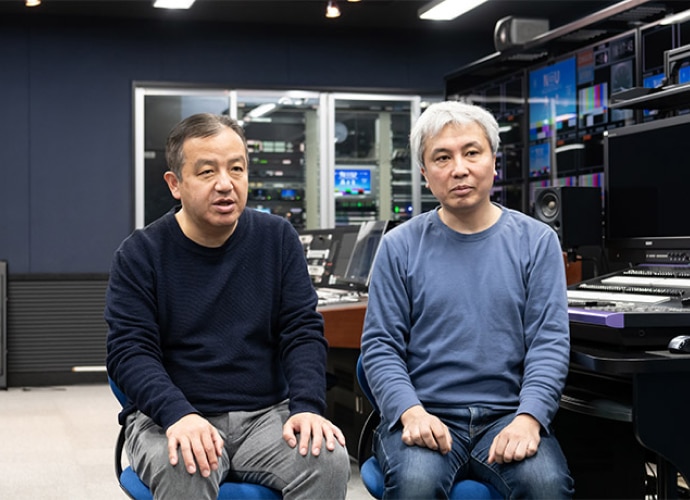
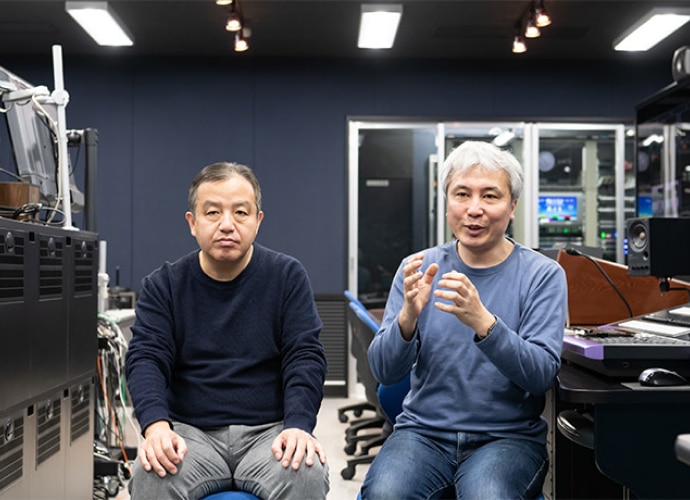
Changes in trends influencing student preferences
Azumi: In the Broadcasting Department, we currently use two types of Cinema Line cameras – the ‘FX6’ and the ‘FX30’. There was a period when we extensively used shoulder camcorders, but since around 2014, there has been an increasing trend towards shallow depth-of-field, cinema-like expressions. This trend has been accelerating, and considering factors such as ease of use, weight, and image quality, we introduced the ‘FX6’. In recent years, the popularity of cinema movies shot with mirrorless cameras has grown, reflecting changes in student preferences. More students now own Alpha cameras and frequently create their own video works. The ‘FX30’ offers the same operational feel as these cameras, making it easy for students to adapt.
Additionally, since it uses an E-mount, students can use their personal lenses, angles and focal lengths which they are already familiar with. These factors, combined with its timely release, led to the adoption of the ‘FX30’. Its smaller and lighter design compared to the ‘FX6’ allows for versatile shooting, which is beneficial for daily assignments. Students, who were well-versed in equipment or those who we interviewed at the actual shooting site, expressed strong desires for the early introduction of Sony’s Cinema Line cameras. These cameras are especially favoured for shooting TV dramas and commercials due to their ability to capture visually appealing footage, which is why we continue to introduce these cameras today. There has been a noticeable increase in students wanting to create their graduation projects with a cinema-like style, indicating a shift in their creative aspirations.
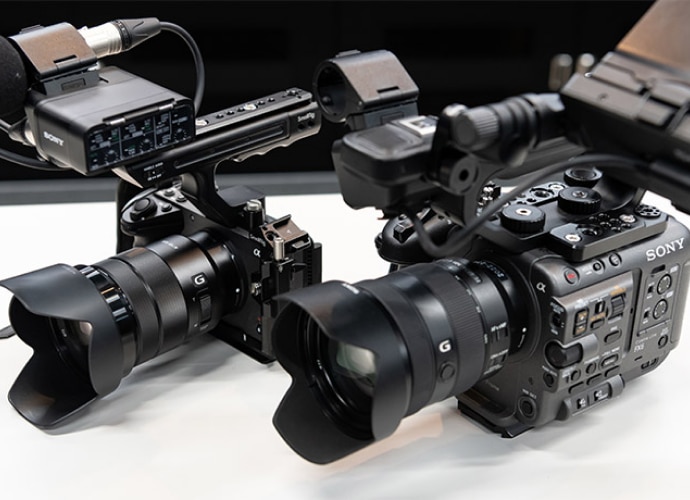
The appeal of Cinema Line cameras as educational tools: Balancing a compact body with high performance
Reliable autofocus and tracking performance
Azumi: Both the ‘FX6’ and ‘FX30’ have significantly improved autofocus performance. This is particularly beneficial for students as it makes achieving results easier. Even when there are multiple people within the frame, selecting the subject with touch focus ensures continuous tracking without issues. This reliability makes these cameras a top choice for senior students’ graduation projects across various genres of video works, demonstrating the high trust in their autofocus capabilities. Additionally, the ability to adjust the persistence and switching speed of autofocus tracking allows for smoother and more natural focus transitions. While manual focus cinema lenses are also popular among students, using Sony’s genuine E-mount lenses leverages the excellent autofocus performance. Therefore, we actively use these genuine lenses to maximize the benefits of the camera’s advanced features.
Abe: In the Broadcasting Department, there are many situations where shooting would be difficult without utilizing autofocus performance. During practical training, students first focus on determining the proper framing. For students who are just managing to set up the camera and attach it to the tripod, adding the task of tracking focus would raise the difficulty significantly.
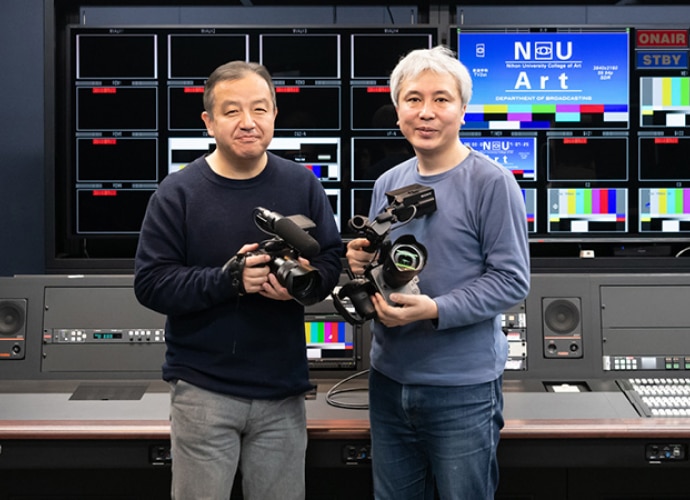
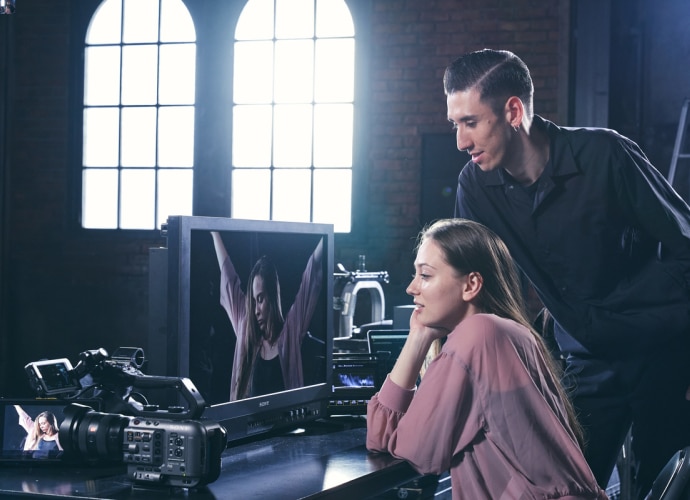
High image quality enhances video productions
Azumi: Regarding image quality, we evaluated equipment from various manufacturers. The Sony Cinema Line cameras, and especially the ‘FX6’ in particular stood out as it’s offering backside-illuminated full-frame sensor with approximately 10.26 million effective pixels and a dynamic range of over 15 stops that provides high-quality footage. Currently, most practical training and graduation projects are shot in HD quality, but when shooting in 4K, we typically use 60p. Even when shooting TV drama training sessions in 4K and then converting to HD, the quality has improved significantly compared to before. For commercial production courses, the 30p setting is used, and in all cases, the image quality remains exceptional. Using S-Log3 for grading helps students learn about editing, making it beneficial for their studies. In classes where there isn’t much time for extensive editing, we instruct students to shoot their assignments in S-Cinetone to ensure a consistent look when the footage is combined, resulting in balanced and cohesive video projects.
The ‘FX30’ currently serves as a support camera, but some students handle short film projects, such as commercials, exclusively with the ‘FX30’. Despite its smaller body, the Super 35mm sensor ensures there are no issues with image quality. For audio input, attaching the XLR handle unit allows professional-grade sound recording, as the grip includes XLR terminals. The camera’s capabilities are nearly on par with higher-end models, making it a preferred choice in settings requiring flexibility. Its superior heat dissipation compared to general mirrorless cameras is advantageous for outdoor shooting. We anticipate that it will be used in more challenging graduation projects in the future.
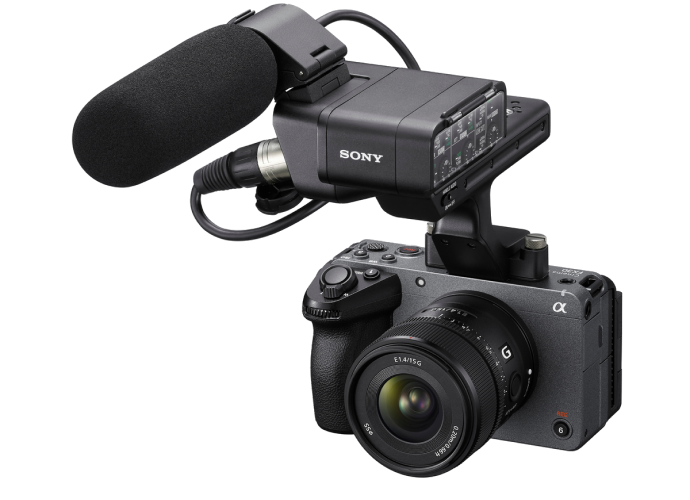
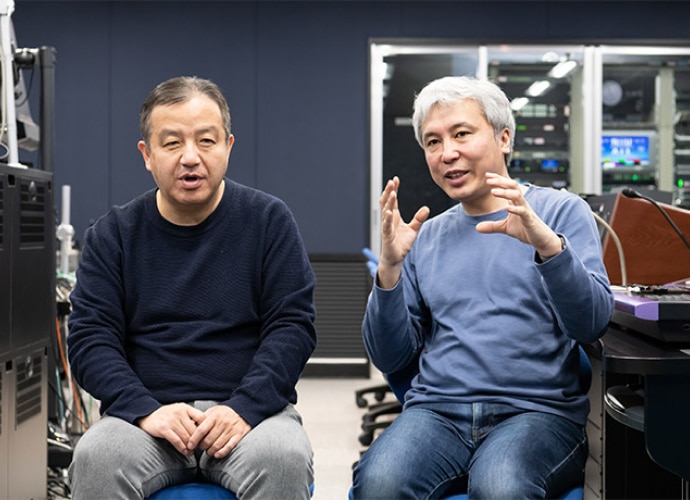
Leveraging high sensitivity performance in a compact body
Azumi: In typical night scene shoots with older, low-sensitivity cameras, we had to repeatedly illuminate the subject first and then progressively light the background. This process required substantial equipment and personnel, making it quite challenging. With the high sensitivity performance of the ‘FX6,’ we can often use just the ambient lighting from streetlights at the location to achieve the desired shot. We then only need to supplement with minimal additional lighting. While a small camera body might not offer much benefit if extensive equipment is still required, the ‘FX6’ excels not only in compactness but also in performance. The excellent noise reduction allows students to capture clear, high-resolution footage, giving them a valuable experience in producing quality images.
Cinema Line cameras enhancing students’ work quality
Cinema Line cameras, such as the ‘FX6’ and ‘FX30′, allow students’ efforts to be clearly reflected in their work, nurturing their ambition for improvement.
Abe: Even if they don’t always achieve exactly what I’ve taught them, students often find the process of trial-and-error rewarding. They can reach a certain level of quality through their own experimentation, which I find engaging and enjoyable. Despite their limited knowledge, they manage to produce work that resembles that of professionals, which boosts their motivation. From the perspective of educational tools where students’ efforts are easily reflected in their projects, I believe ‘FX6’ and ‘FX30’ are excellent cameras for our Broadcasting Department.
Azumi: Students are highly attuned to current trends in visual expression. There’s a noticeable focus on shallow depth of field and cinematic-like visuals. Students who work with Cinema Line cameras capable of producing such imagery feel very alive and engaged. Building confidence in capturing what they envision contributes to both their motivation and the overall quality of their work, fostering a strong sense of ambition.
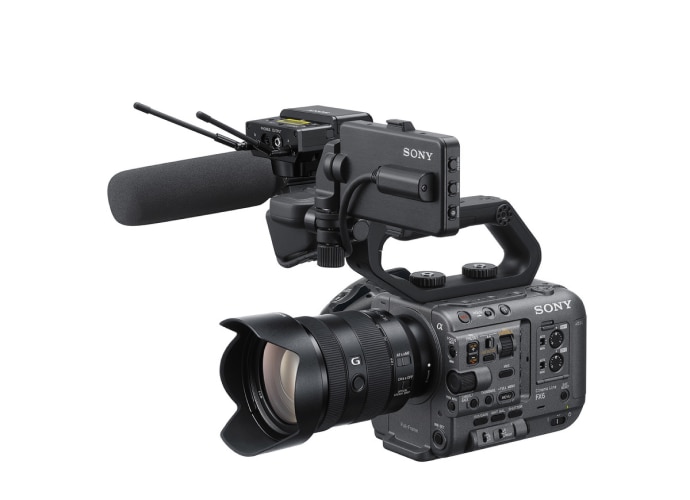
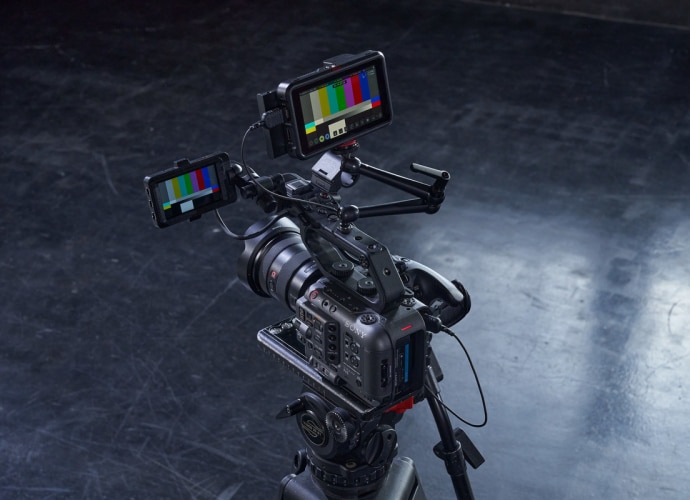
Students well-prepared for professional life after graduation
Recently, there has been an increase in cases where video production needs to be done with small teams, a scenario that applies both to students and professionals alike. In video production, it’s common to bring not only the camera body but also peripheral equipment like tripods. The compact and lightweight nature of Cinema Line cameras makes them incredibly useful in such situations. Moreover, students gain confidence knowing that the equipment they are familiar with at our university is also used in professional settings such as television stations and production companies. Overall, Cinema Line cameras stimulate the imagination of the cinematographer, making them ideal tools for fostering creativity in video production.

